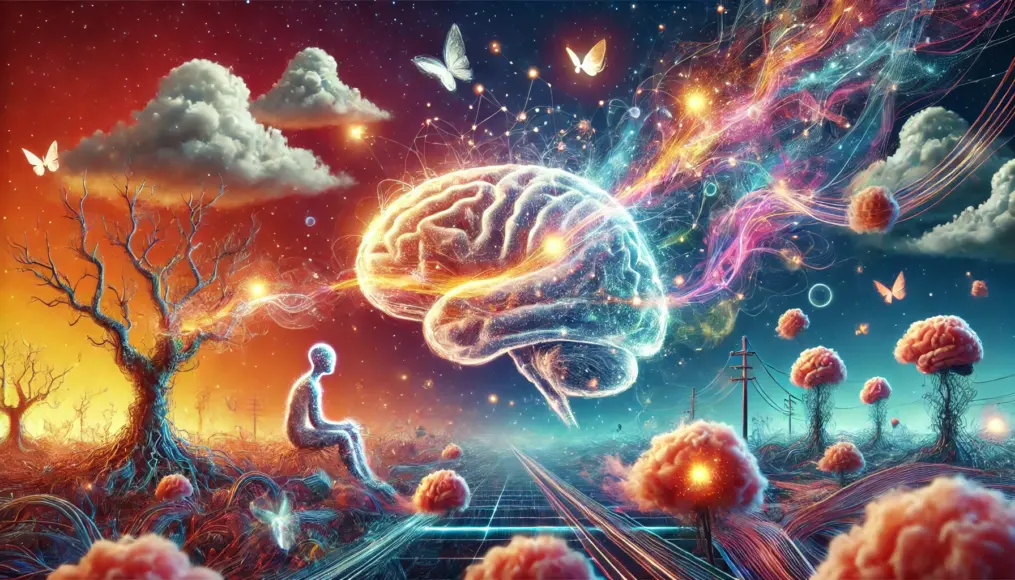Have you ever woken up and tried to recall the face of a stranger you encountered in your dream?
Why do people we’ve never met appear in our dreams?
This phenomenon has fascinated psychologists and mystery enthusiasts alike, offering a blend of scientific curiosity and a touch of the unexplained.
In this article, we’ll delve into the psychology and mystery behind the unknown people who populate our dreams.
Are the “Unknown People” in Dreams Really Strangers?

Many of the so-called “unknown people” in dreams might not be strangers after all.
To understand this, we need to explore how the brain processes and stores memories.
How the Brain Handles Memories
The brain constantly absorbs and stores information, even from fleeting interactions or overlooked details in daily life.
Although these memories may not surface consciously, they can reappear in dreams.
Examples include:
- Faces of People You’ve Passed By
A stranger in your dream might be someone you passed on the street or saw on public transport without consciously noticing. - Background Characters on TV or in Movies
Sometimes, faces that feel unfamiliar could belong to extras or minor characters from media you’ve consumed. - Composite Faces Created by Your Brain
The brain might combine features from different faces stored in memory to create entirely new individuals for your dreams.
Why Do Strangers Appear in Dreams?
The presence of strangers in dreams can also reflect psychological factors, such as:
- Anxiety About the Unknown
Entering a new phase of life or encountering unfamiliar situations can prompt the brain to simulate scenarios involving unknown people. - Repressed Memories or Emotions
Past experiences or unresolved feelings might manifest symbolically as unfamiliar faces.
How Does the Brain Create Dreams?

Dreams are complex constructs generated during the REM (Rapid Eye Movement) phase of sleep, when the brain is highly active.
The Process of Dream Formation
Dreams form through a combination of the following mechanisms:
- Organizing Memories
The brain organizes and consolidates daily experiences, which can result in unknown people being cast as dream characters. - Emotional Processing
Emotions like anxiety or excitement are visualized in dreams, sometimes taking the form of unfamiliar individuals. - Imaginative Synthesis
The brain blends memories and imagination, creating people and scenarios that don’t exist in real life.
A Scientific Perspective
From a neuroscientific viewpoint, the appearance of unknown people in dreams reflects the brain’s creative adaptability.
Key factors include:
- Random Neural Activity
Dreams may arise from random firings of neurons, which the brain weaves into coherent stories. - Fragmented Memories
Unresolved memories may emerge in fragmented forms, represented by unfamiliar dream characters.
The Psychological Reasons for Unknown People in Dreams

From a psychological standpoint, the appearance of unknown people in dreams can be influenced by underlying emotions or mental states.
Key Psychological Triggers
- Adapting to New Environments
Strangers in dreams might symbolize your brain rehearsing for unfamiliar situations, such as a new job or social circle. - Stress and Anxiety
These emotions often manifest in dreams as vague or symbolic representations, like unknown individuals. - Projection
Dream characters might represent hidden aspects of your own personality projected onto others.
The Role of Memory and the Subconscious

Unknown people in dreams are often deeply connected to subconscious memories and emotions.
Reconstructing Memories in Dreams
The brain uses dreams to process and reconfigure memories in various ways:
- Hidden Memories
Forgotten details from daily life can resurface in the dream world. - Visualization of Emotions
Feelings are sometimes given a tangible form in dreams, appearing as unfamiliar characters. - Dialogues with the Self
Unknown people in dreams might serve as symbols for internal conflicts or unresolved issues.
Could the Strangers in Your Dreams Be “You”?

In many cases, unknown people in dreams may symbolize parts of yourself, reflecting your inner world.
Dream Characters as Self-Representation
- Repressed Desires or Talents
Dreams might reveal hidden potentials or desires, represented by unfamiliar individuals. - Signs of Growth and Change
Strangers in dreams can symbolize your aspirations for personal growth or transformation. - A Mirror of the Subconscious
These characters might act as mirrors, helping you explore unknown aspects of your personality.
Conclusion
The strangers who appear in your dreams are deeply intertwined with your memories, emotions, and subconscious mind.
By contemplating their presence, you might uncover valuable insights into your inner world.
The next time you encounter an unfamiliar face in your dreams, consider the hidden messages it might hold.




Comment